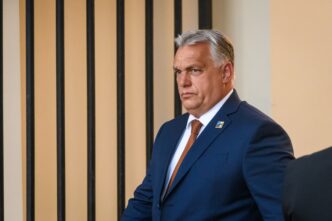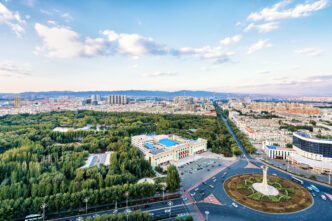More than three years after the onset of Russia’s full-scale invasion of Ukraine, a new wave of uncertainty looms over tens of thousands of Ukrainian refugees in France. This uncertainty stems from tightening budgets and waning political support. While countries such as Germany and Poland continue to accommodate the majority of those fleeing the conflict, France hosts only 55,000 Ukrainians under the EU’s “temporary protection” status. In stark contrast, Germany alone has welcomed 1.18 million refugees.
Since March 2022, this temporary protection status has allowed Ukrainians to bypass the traditional asylum process, granting them access to work permits, healthcare, education for children, and a modest asylum seeker allowance of up to €426 per month in France. Although the scheme was initially set to conclude in March 2025, it has been extended until March 2026 due to the ongoing conflict. However, as the war persists and economic pressures mount, the French government faces increasing challenges in maintaining support for Ukrainian refugees.
One pressing issue is housing. In the immediate aftermath of the invasion, the French state mobilized over 19,500 spots in emergency shelters for Ukrainians. However, according to the NGO La Cimade, these numbers have dwindled significantly, dropping to 13,000 spots in 2023, 9,000 in 2024, and 4,000 in 2025. Additionally, rental intermediation schemes known as ILM were introduced, enabling organizations and NGOs to sublet private apartments to vulnerable Ukrainian families. Approximately 30,000 homes were initially made available, but this system is now faltering.
A government bulletin from December 2024, issued by French Prime Minister François Bayrou, indicated that only 11,000 ILM spots will be financed in 2025, far short of the number needed. Organizations providing apartments to refugees must initially cover the costs of subletting, but their budgets are increasingly strained. The delayed reimbursement from the state exacerbates their financial challenges, potentially leading some organizations to cease their support for Ukrainian refugees.
As funding diminishes, aid groups in France fear a looming crisis. Ukrainian families worry about the potential loss of accommodation. In autumn 2024, warnings were raised after several families in eastern France received expulsion notices from ILM housing. Thanks to media coverage and advocacy efforts, they were allowed to remain, but the situation remains deeply unsettling.
The framework of the temporary protection scheme is also being tested as French authorities encourage Ukrainian refugees to apply for asylum. Under the temporary scheme, refugees are ineligible for certain social aids, such as the RSA (active solidarity income) or aid for the disabled. As the war continues, temporary protection increasingly resembles a permanent state of limbo.
Senator Nadia Sollogoub is advocating for change. She has proposed a bill to be examined by the Senate, aiming to grant those under temporary protection and the ILM scheme the same social rights as asylum seekers, allowing them to return home when possible. She criticizes the government’s inconsistent messaging, noting that while national rhetoric emphasizes generosity towards Ukrainian refugees, the 2025 budget decisions did not reflect adequate funding to support them.
Since January 2022, France has invested €4.32 billion in welcoming Ukrainian refugees. In February, Parliament adopted a contentious budget plan for 2025, aiming to cut €30 billion and raise taxes by €20 billion to limit France’s deficit to 5.4% of GDP. As state-funded support schemes falter, more Ukrainians are applying for asylum. In 2024, France received over 11,800 first-time asylum applications from Ukrainians, four times the previous year’s number, making Ukraine the second-largest country of origin for asylum seekers after Afghanistan.
This surge in asylum applications presents additional complications. Government services are already overwhelmed, leading to lengthy processing times for documents. The initial goal was to create a pathway for Ukrainians to return home post-conflict, not to force them into long-term asylum. Unlike temporary protection, refugee status prevents individuals from returning to their home country. Over time, the intention of Ukrainians to return has decreased significantly, from 52% in 2023 to 31% in 2024, according to the EU Agency for Asylum.
While France has not directly reduced support for Ukrainian refugees, the situation reflects a broader trend across Europe, where support for Ukrainian refugees is gradually being scaled back. In December 2024, the Swiss parliament restricted temporary protection to those from attacked or occupied areas in Ukraine. Germany and Estonia have also curtailed aid and access to services for Ukrainians.








